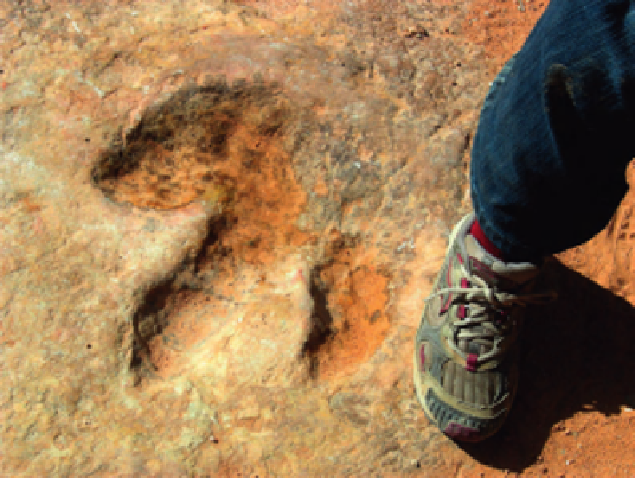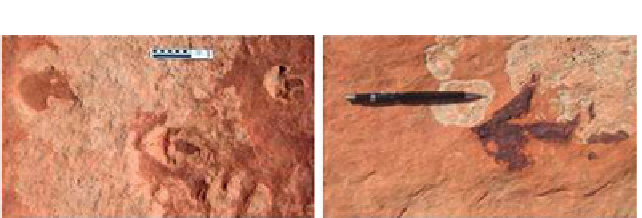Environmental Engineering Reference
In-Depth Information
A
B
C
FIGURE 4
Trace fossils in ancient inland erg deposits. (A, B) Vertebrate trace fossils in the Lower
Jurassic Navajo Sandstone, near Coyote Buttes in Kane County, Utah (photographs courtesy of
Marjorie A. Chan). Small, three-toed, dinosaur tracks in concave epirelief (A, scale
¼
10 cm),
and small, three-toed, dinosaur track that has been replaced by dark brown iron oxide (B, pen-
cil
¼
15 cm long). (C) Large, three-toed, dinosaur track in concave epirelief in the Lower Jurassic
Navajo Sandstone, in the San Rafael Swell in Emery County, Utah (shoe
¼
30 cm long).
in the Lower Jurassic Navajo Sandstone in southern Utah. He demonstrated that
the tracks (
Grallator
and
Brasilichnium
) were emplaced deeply in dry sand and
subsequently buried by thin grain-flow avalanches on the dune foresets. His anal-
ysis suggests not only that Jurassic vertebrates commonly walked on the steeply
dipping lee side of dunes but also that their tracks on that side had a high preser-
vation potential. This conclusion effectively contradicts earlier assumptions by
previous workers that the steep angles of repose and cohesion-less sand grains
of dune slip faces generally precluded good preservation of tracks.
In the Middle Jurassic Entrada Sandstone in southern Utah,
Mil`n and
Loope (2007)
examined large numbers of three-toed theropod dinosaur tracks
(
Megalosauripus
and
Therangospodus
) in various preservation states, resulting
from variations in the gait of the dinosaurs and a range of paleoslopes of the










Search WWH ::

Custom Search